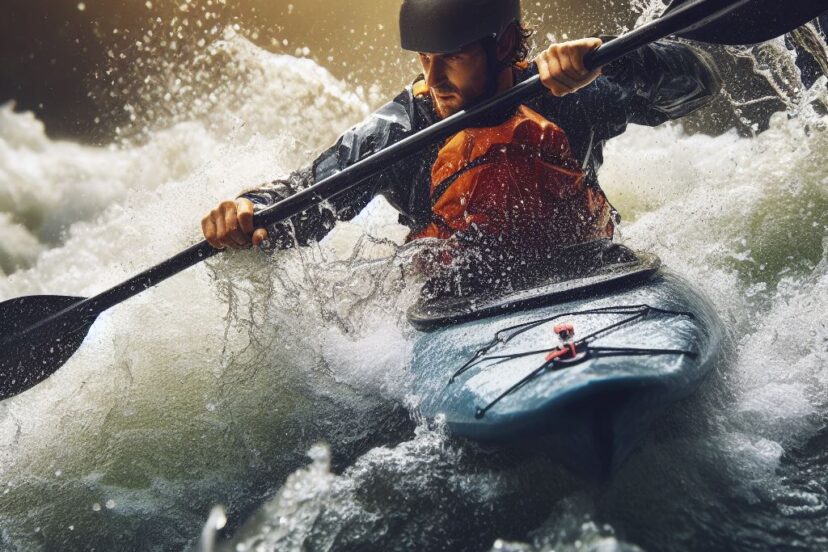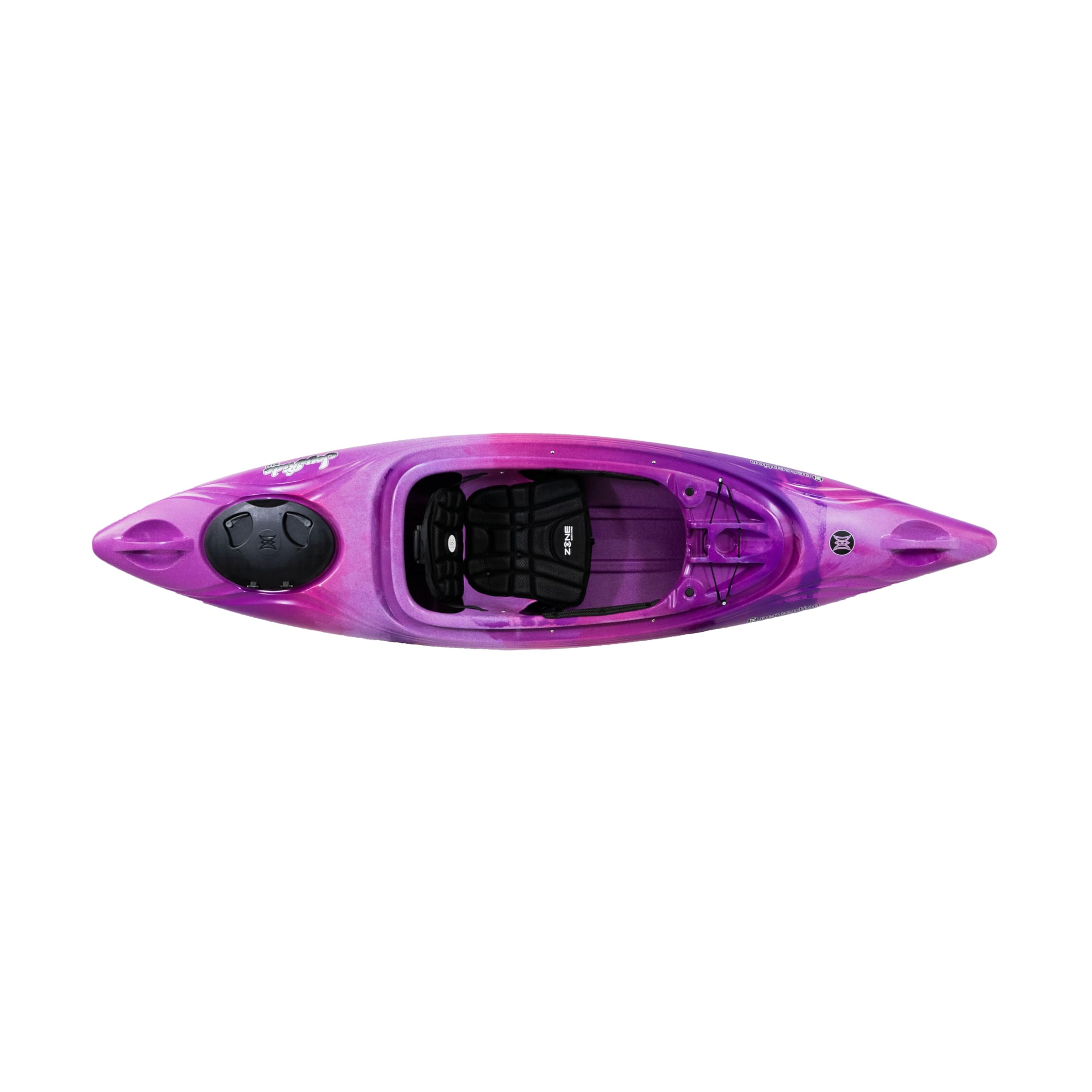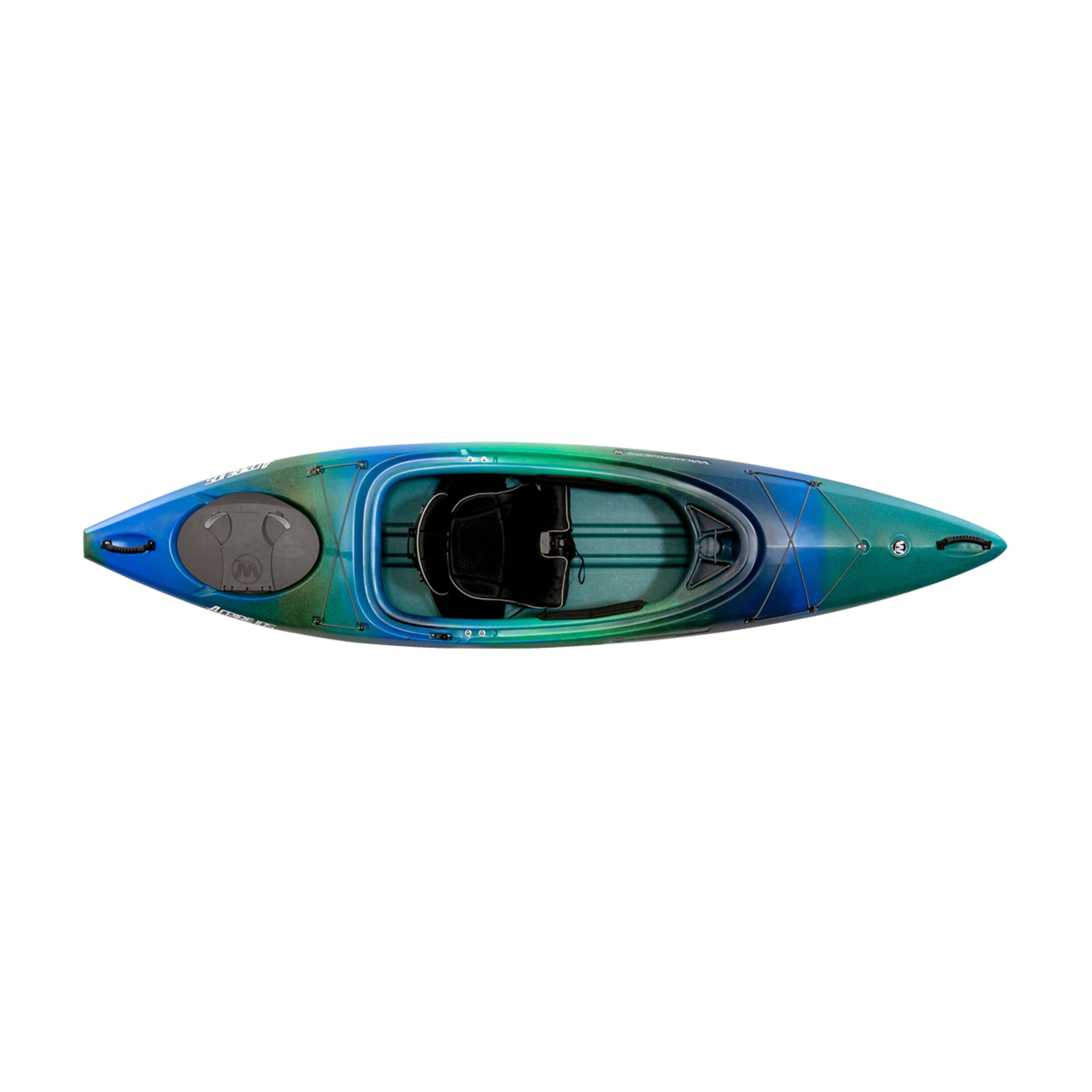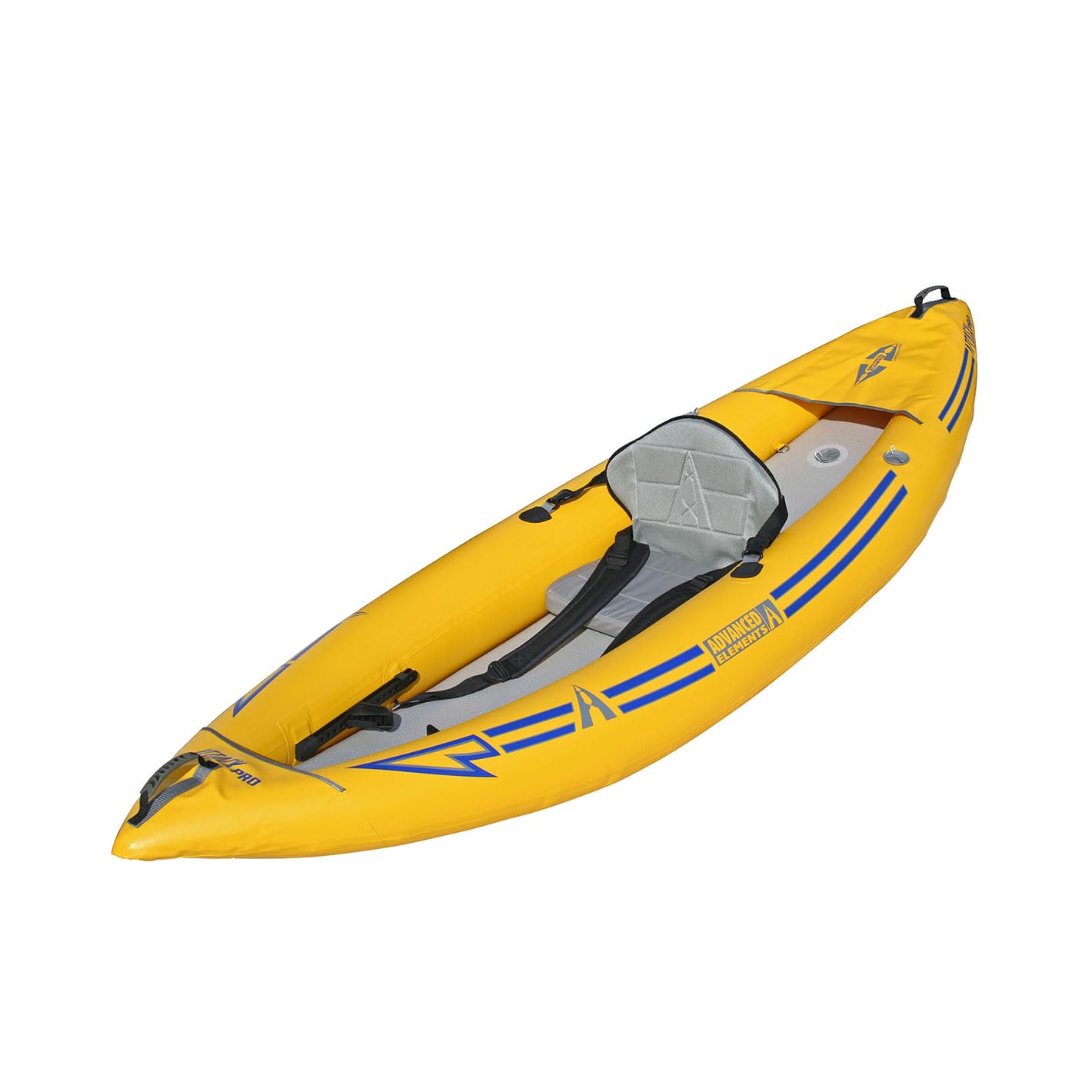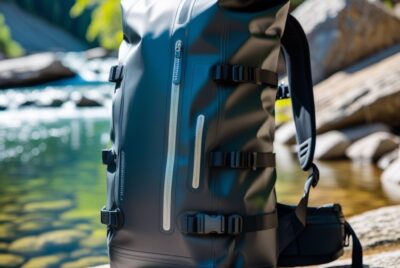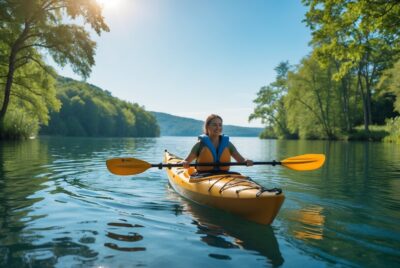Whitewater Kayak: Thrilling Adventures
*We may earn a commission for purchases made using our links. Please see our disclosure to learn more.
Whitewater Kayak Buyer’s Guide
Whitewater kayaking is an exciting and intense sport for those who love adventure and water. There are a lot of different types of kayaks, but a whitewater kayak, in particular, are perfect for navigating rough rapids, swift currents, and steep drops. They’re built to handle the challenges of turbulent water and offer a thrilling ride for those who seek it.
When choosing a whitewater kayak, there are a few critical aspects to consider. The type of material is essential; you want something durable yet lightweight. The kayak’s size and shape also matter, as different designs perform better in various water conditions. Weight is another factor since you might need to carry the kayak to the launch spot. Finally, the kayak’s features, like the seat design and storage space, can affect comfort and convenience.
By focusing on these key elements, you can find the right whitewater kayak that fits your needs and enhances your paddling experience. I tested multiple options to determine which kayaks offer the best performance in challenging conditions.
Best Whitewater Kayaks
I’ve researched and compiled a list of the best whitewater kayaks. These top choices offer quality, performance, and durability for both beginners and experienced paddlers alike.
Driftsun Rover Inflatable Kayak
If you’re looking for an inflatable kayak that performs well in rough waters, the Driftsun Rover is a solid choice.
Pros
- Excellent maneuverability
- Easy to set up and pack away
- Durable and puncture-resistant
Cons
- Slightly heavy for an inflatable
- Can be tricky to dry completely
- Price is on the higher side
I recently had the chance to use the Driftsun Rover Inflatable Kayak, and it did not disappoint. From the moment I unpacked it, I was impressed with how compact it was. Inflating it took only about six minutes, and I was ready to hit the water almost immediately.
Navigating through class III and IV rapids was a breeze thanks to the kayak’s front and rear rocker profile. I felt in control at all times and appreciated the stability, especially in rougher waters. The high-pressure dropstitch floor added to its sturdiness, making the ride smooth and enjoyable.
Though it’s slightly heavier for an inflatable at 22 pounds, the weight is a reasonable trade-off given its durability. The kayak handled obstacles without any punctures, thanks to the reinforced double-layered PVC. My adventure was comfortable, with the adjustable EVA padded seat providing great support throughout the trip.
Drying out the kayak completely was a bit of a hassle, but overall, the performance outweighed this minor inconvenience. For anyone serious about whitewater kayaking, the Driftsun Rover is definitely worth considering.
Perception Joyride 10 Kayak
A solid choice for both beginners and experienced kayakers due to its comfortable design and stable performance.
Pros
- Large, comfortable cockpit
- Stable and easy to maneuver
- Durable construction
Cons
- Heavier than some alternatives
- Limited storage space
- Higher price point
I took the Perception Joyride 10 Kayak for a spin recently, and I was impressed with its large cockpit and back-friendly seats. The extra cushioned padding kept me comfortable even during longer paddles. True to its name, the ride felt smooth and stable, making it easy to get in and out without any fuss.
Durability is another strong point of this kayak. It’s crafted from UV-resistant materials that stand up well to rough conditions. This is important since I plan on using it frequently, and I wouldn’t want it to wear out quickly. The kayak also features a one-piece construction, which ensures it stays leak-proof and safe.
One feature I found fun and practical is the selfie slot. It’s a neat touch, allowing me to secure my phone easily and capture moments on the water. The only downside I noticed was the kayak’s weight. At 50 pounds, it’s a bit heavier than other options I’ve tried, making it more of a challenge to transport.
Additionally, while it excels in comfort and durability, the storage space is somewhat limited. For a day out on the water, it might be enough, but for longer trips, I had to pack strategically. Despite its higher price, I think the quality and features justify the cost, especially for those serious about their kayaking adventures.
Sea Eagle 300X Inflatable Kayak
A versatile kayak for whitewater and flat-water adventures, perfect for thrill seekers and casual paddlers alike.
Pros
- Super-fast self-bailing system
- Handles both whitewater and flat-water well
- Removable skeg for better tracking
Cons
- Takes a bit of time to set up
- Single seating capacity
- Slightly heavier than some inflatables
I’ve taken the Sea Eagle 300X out on both rivers and lakes, and it’s held up impressively in each environment. The 16 floor drains are a real game-changer when dealing with choppy waters. For whitewater, opening the drains keeps you from getting bogged down by water.
The kayak’s stability surprised me, especially in calmer waters. With the skeg in place, tracking was smooth and consistent, which made paddling more efficient. It’s perfect for fishing or just leisurely exploring.
On the downside, setting up the kayak isn’t the quickest process. I also found that its 45-pound weight made it a little cumbersome to carry alone. But once you’re on the water, these minor inconveniences quickly fade away. This is a solid choice for anyone wanting flexibility and performance in various paddling conditions.
Driftsun Almanor Inflatable Whitewater Kayak
A solid choice for anyone who loves outdoor adventures and needs a portable, easy-to-inflate kayak.
Pros
- Lightweight and easy to carry
- Quick setup in under 10 minutes
- Comfortable EVA padded seats
Cons
- Storage bag is not waterproof
- Handles can dig into your hips
- Limited space for larger adults
Taking this kayak out on the lake was a breeze. The lightweight design made it easy to transport, and I had it inflated and ready to go in almost no time. The long waterline helps it glide smoothly, making it perfect for both short outings and longer paddling sessions.
The EVA padded seats provide excellent comfort and back support. Adjusting the seats to fit my needs was simple and quick. This made a noticeable difference during longer sessions on the water, avoiding discomfort and making the experience more enjoyable.
One minor issue is the storage bag, which isn’t waterproof. If it starts to rain or if the bag gets splashed, you might end up with some wet gear. Another niggle is that the internal handles can press into your hips, which could be uncomfortable for some. Despite these small drawbacks, the kayak’s overall performance and portability make it a great investment for adventure enthusiasts.
Wilderness Systems Aspire 105 – Galaxy Whitewater Kayak
This kayak is perfect for medium to larger paddlers looking for stability and performance.
Pros
- Very stable on flat and slow-moving water
- Extremely comfortable seat and footrests
- Easy to maneuver
Cons
- Might be too heavy for some to carry alone
- Limited storage space
- Slightly high price
I recently had the chance to paddle the Wilderness Systems Aspire 105. It excels in stability, making it ideal for beginners or those who prioritize a steady ride. The kayak is designed for medium to larger paddlers, and it truly provides a comfortable and secure experience.
One standout feature is the Phase 3 Air Pro seat. It’s so comfortable that I could paddle for hours without feeling sore. The adjustable footrests are a nice touch, allowing for a customized fit no matter your height. I also appreciated the skeg, which kept the kayak straight even in windy conditions.
Its weight, at 48 lbs, might be a bit heavy for some, but it balances durability with ease of transport. The storage space is somewhat limited, making it suitable for shorter trips rather than extended adventures. While it is on the pricier side, the comfort and stability it offers make it a worthwhile investment for any serious paddler.
Advanced Elements Attack PRO Whitewater Kayak
If you’re looking for a lightweight, high-performance kayak for rough water, this is a solid choice.
Pros
- Lightweight and portable
- Durable PVC tarpaulin material
- Stable with a wide stance
Cons
- Limited storage space
- Only suitable for one person
- Pricey for some budgets
The Advanced Elements Attack PRO Whitewater Kayak is perfect for anyone who wants a reliable and nimble ride on rough waters. Its construction includes durable PVC tarpaulin, making it tough against abrasions and impacts.
Portability is a big plus with this kayak, weighing only 25 lbs. This makes it ideal for those who need to carry it over longer distances. As for stability, its 35-inch width provides plenty, even in choppy conditions. The adjustable thigh straps and high-back seat add to the comfort and control.
One drawback is the limited storage. The cargo bay can hold a drybag or some gear, but that’s about it. It’s designed for one person, which might be a downside for those looking to share the adventure. Lastly, it can be a bit pricey, but its performance and durability justify the cost.
Overall, for solo adventurers who love tackling whitewater, this kayak is definitely worth considering.
Check it out on Amazon.
Pelican Sprint 120XR Whitewater Kayak
The Pelican Sprint 120XR is a great choice if you want a performance kayak with comfort and safety features.
Pros
- Excellent stability in choppy water
- Comfortable seating for long durations
- Plenty of storage options
Cons
- Lacks a rudder for precise steering
- Limited color options
- Somewhat expensive
I recently took the Pelican Sprint 120XR out for a paddle, and I have to say, the stability was impressive. The deep V-chine hull design helped me stay balanced, even in slightly rougher waters. I felt confident with every stroke, knowing the kayak would respond well.
The seating system was comfortable, providing good support for my back, which was especially helpful on longer paddles. The breathable cushion kept me cool, and adjustable footrests added an extra level of comfort. I didn’t feel cramped at all, which is often a concern for me on longer trips.
Lastly, the storage options were fantastic. The quick-lock hatch made it easy to store my gear securely, and the cockpit table with a day hatch and bottle holders was very handy. The kayak can hold up to 300 pounds, so I had no worries about overloading. Though it could use a rudder for better control, the overall performance makes it a solid choice.
Buying Guide for a Whitewater Kayak
When choosing a whitewater kayak, it’s important to focus on a few key features. Let me explain some important factors.
Kayak Type
Different kayaks are designed for various water conditions:
- Playboats: Best for tricks in small waves.
- Creek Boats: Great for steep rivers.
- River Runners: Ideal for long distances.
Material
Most kayaks are made from:
- Plastic: Durable and affordable.
- Composite: Lighter, more expensive.
Size
Your kayak should fit your height and weight. Check the manufacturer’s size chart to find the right fit. A kayak that’s too small can be uncomfortable, and one that’s too large can be hard to control.
Weight
A lighter kayak is easier to transport but can be more expensive. If you plan to carry your kayak often, consider this factor carefully.
Comfort
A comfortable seat and footrests are essential. Look for adjustable seats and padded footrests. Comfort can make your kayaking journey more enjoyable.
Stability
For beginners, stability is key. Wider kayaks are generally more stable but less agile. Think about your skill level and what you’ll be using the kayak for.
Safety Features
Make sure the kayak has adequate safety features, like:
- Grab handles
- Bulkheads
Price
Finally, set a realistic budget. High-quality kayaks can be expensive, but they often offer better durability and features.
By considering these factors, you can choose the best whitewater kayak for your needs.
Frequently Asked Questions
These questions cover important topics like features to look for in a whitewater kayak, essential safety equipment, and how to choose the right size kayak for your body.
1. What are the key features to look for in a whitewater kayak?
Key features to look for include hull shape, which affects maneuverability and stability. Look for a durable material like polyethylene. Check the seat for comfort and support.
2. What safety equipment is essential for whitewater kayaking?
A helmet, a properly-fitted personal flotation device, and a paddle with a safety leash are essential. Also, consider wearing a wetsuit or drysuit depending on the water temperature.
3. How do you choose the right size whitewater kayak for your body type?
Choose a kayak that matches your weight and height. Make sure you can fit comfortably inside the cockpit. Try different sizes to see what feels best.
4. What are the best practices for maintaining a whitewater kayak?
Rinse the kayak with fresh water after each use. Check for cracks or damage regularly. Store it in a cool, dry place away from direct sunlight to prevent UV damage.
5. What are the differences between hardshell and inflatable whitewater kayaks?
Hardshell kayaks are more durable and offer better performance in rough water. Inflatable kayaks are lighter and easier to transport but may not be as durable.

